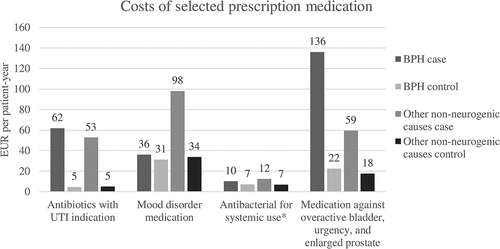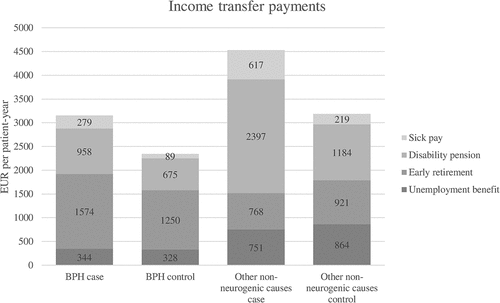Figures & data
Figure 1. Flowchart of study population.

Table 1. Demographic characteristics of case and matched control groups at index.
Figure 2. Predicted total mean healthcare costs in EUR per patient-year for case and matched control groups. All differences between case and matched control group were significant (p < 0.000). Please refer to Table S9 for confidence intervals.

Table 2. Predicted total mean health-care utilization per patient-year for case and matched control groups.
Table 3. Predicted mean utilization and costs in EUR per patient-year of selected primary health-sector services for case and matched control groups.
Figure 3. Predicted mean costs in EUR per patient-year of selected prescription drugs for case and matched control groups. All differences between case and their matched control groups are significant (p < 0.000). Please refer to Table S10 for confidence intervals.

Table 4. Predicted inpatient and outpatient mean utilization per patient-year of bladder complications for case and matched control groups.
Table 5. Predicted inpatient and outpatient mean costs in EUR per patient-year of bladder complications for case and matched control groups.
Figure 4. Predicted mean income transfer payments in EUR per patient-year for case and matched control groups. All differences between case and their matched control groups are significant (p < 0.000; however, for unemployment benefit p < 0.010). Please refer to Table S11 for confidence intervals.

